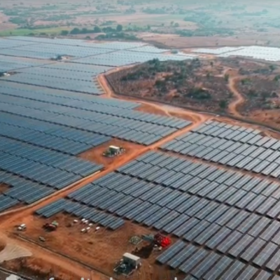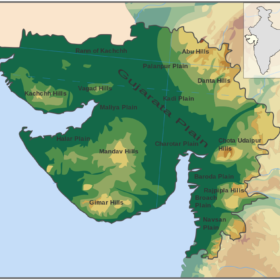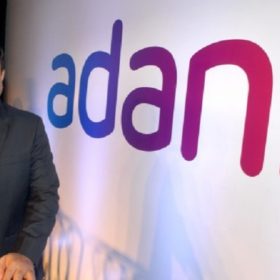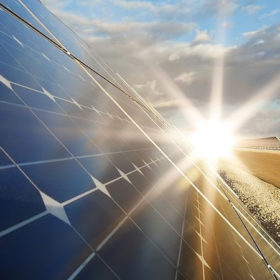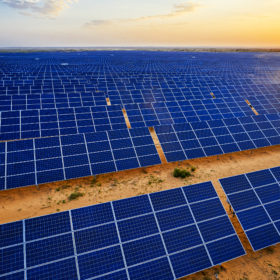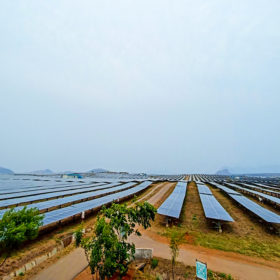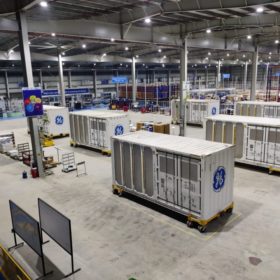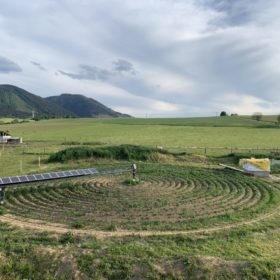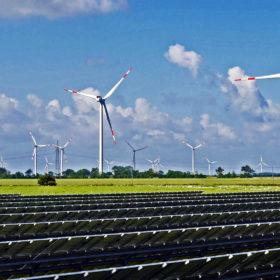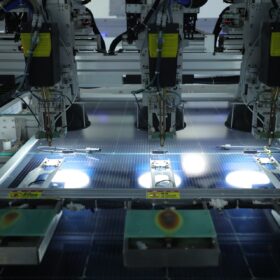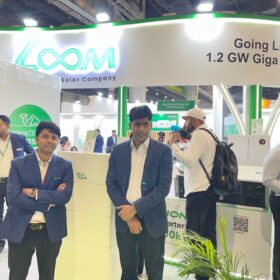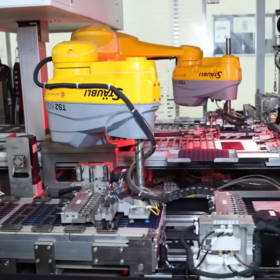ReNew’s operational renewables portfolio hit 7.6 GW in FY2021-22
ReNew Power’s total income rose 27% year on year to INR 69,195 million ($912 million) in fiscal 2021-22, on 130 MW of solar capacity additions in the fourth quarter alone. Its overall renewables portfolio rose to 10.7 GW at the end of March, including 7.6 GW of commissioned capacity and 3.1 GW of committed projects.
NTPC now operating 35 MW portion of 56 MW Kawas solar project
State-run power generator NTPC has switched on 15 MW of capacity at the 56 MW Kawas solar project in Gujarat, following the commissioning of 20 MW in May.
TotalEnergies to acquire 25% stake in Adani’s green hydrogen unit
France’s TotalEnergies has signed an agreement with Adani Enterprises to acquire 25% of its new energy arm, Adani New Industries Ltd. The joint venture platform, ANIL, will be integrated across the value chain to drive down green hydrogen production costs. It aims to develop a green hydrogen production capacity of 1 million tons per annum by 2030.
Torrent Power acquires 50 MW solar plant from SkyPower
Torrent Power has bought a 50 MW solar plant in Telangana that supplies power to Northern Power Distribution at a tariff of about INR 5.35 ($0.069)/kWh, fixed for the entire 25-year duration of the power purchase agreement. The project has a remaining useful lifetime of about 20 years.
Tata Power posts 50% jump in net profit for FY2021-22
Tata Power’s profit after tax grew by 50% year on year to INR 2,156 crore ($276 million) for the fiscal year ending March 31, 2022.
Assam to host 1 GW solar project in joint venture with NLC
The state government has already allotted land for the massive solar project that will be set up with an investment of INR 5,000 crore ($639 million).
NTPC tenders EPC package with land for 200 MW of solar project
NTPC Renewable Energy Limited (NTPC REL) is seeking contractors to install and commission 200 MW of grid-connected solar capacity anywhere in Madhya Pradesh.
General Electric to triple its solar and battery energy storage capacity in India
The US multinational will expand the solar and battery energy storage manufacturing capacity at its factory in Tamil Nadu to 9 GW per annum by the end of 2022. The factory manufactures FlexInverter power conversion solution and FlexReservoir utility-scale energy storage solution.
Solar arm for agrivoltaic applications
A Slovakian startup has developed a photovoltaic-integrated arm that provides off-grid power for weeding and other small agricultural applications. In its largest configuration, the system is 18 meters long, has a capacity of 2.4 kW, and is able to cover a cultivated area of 994 m².
Indian renewable energy sector recorded $14.5 billion investment in FY2021-22
The investment needs to more than double to $30-$40 billion annually for India to reach the 2030 renewables target of 450 GW.
